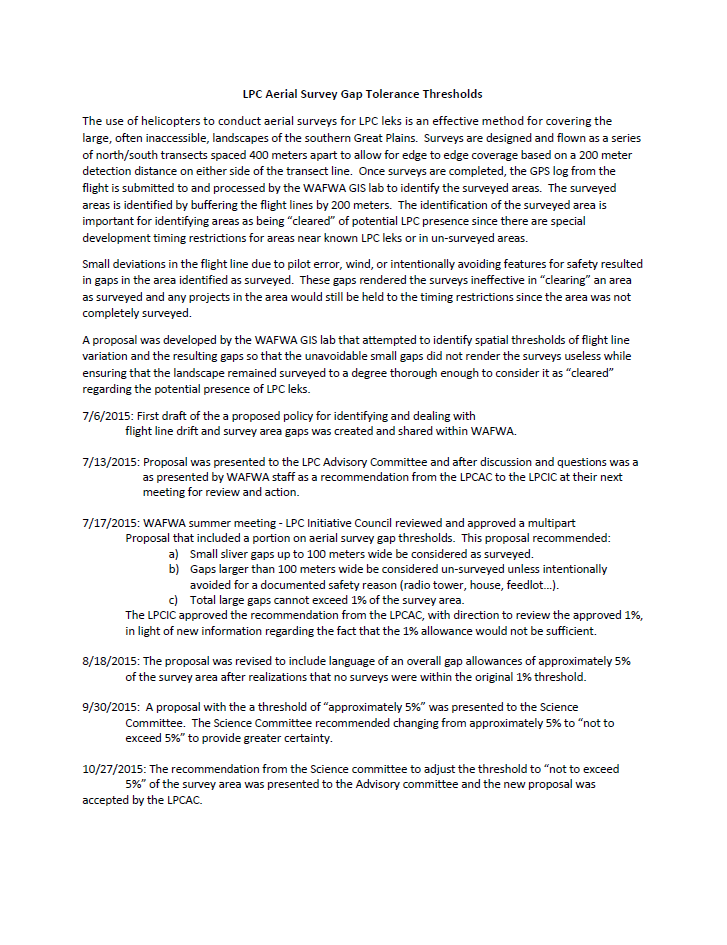The use of helicopters to conduct aerial surveys for LPC leks is an effective method for covering the large, often inaccessible, landscapes of the southern Great Plains. Surveys are designed and flown as a series of north/south transects spaced 400 meters apart to allow for edge to edge coverage based on a 200 meter detection distance on either side of the transect line. Once surveys are completed, the GPS log from the flight is submitted to and processed by the WAFWA GIS lab to identify the surveyed areas. The surveyed areas is identified by buffering the flight lines by 200 meters. The identification of the surveyed area is important for identifying areas as being “cleared” of potential LPC presence since there are special development timing restrictions for areas near known LPC leks or in un-surveyed areas.
Small deviations in the flight line due to pilot error, wind, or intentionally avoiding features for safety resulted in gaps in the area identified as surveyed. These gaps rendered the surveys ineffective in “clearing” an area as surveyed and any projects in the area would still be held to the timing restrictions since the area was not completely surveyed.
A proposal was developed by the WAFWA GIS lab that attempted to identify spatial thresholds of flight line variation and the resulting gaps so that the unavoidable small gaps did not render the surveys useless while ensuring that the landscape remained surveyed to a degree thorough enough to consider it as “cleared” regarding the potential presence of LPC leks.
Attached Files
| File | Action |
|---|---|
| LPC Aerial Survey Gap, 2015 | Download |
- Version
- File Type pdf
- File Size 0.00 KB
- Publication Date December 5, 2015
- Download Count (since 10/2020) [317]
